
News got worse for Australia’s tourism industry yesterday, with the release of the overseas short-term arrivals and departures figures for July showing a record number of departures over the year.
Short-term visitor arrivals fell by -2.9% in July, partly offset by a -0.4% decrease in short-term resident departures.
In the 12 months to July 2012, the annual number of departures increased by 7.1% relative to the corresponding period of the prior year, whereas short-term arrivals grew by only 1.4%.
Taking a longer-term view, the ratio of annual tourism arrivals to departures has hit fresh 25-year lows (see below chart).
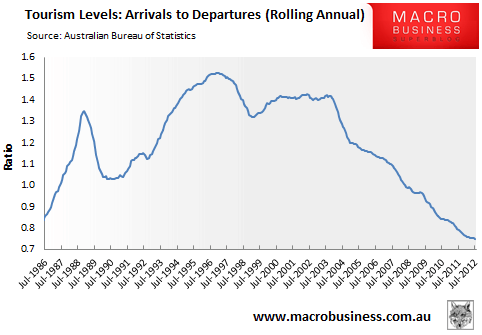
And as suggested above, the fall in the ratio of arrivals to departures has been caused predominantly by an exodus of Australians choosing to travel abroad rather than domestically:
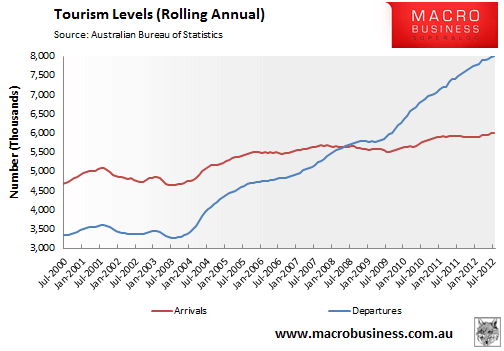
In the year to July 2012, a record 8.0 million Australians holidayed overseas – more than double the level of 10 years ago (3.4 million). This compares to only 6.0m tourist arrivals over the same period (4.8 million 10 years ago).
South East Asia (particularly Indonesia and Thailand) remains Australia’s favourite holiday destination, receiving a record 220,200 visitors in July, or 32% of Australia’s total departures over the month. This was followed by Oceania (21%), the Americas (13%), North East Asia (11%) and North West Europe (10%):
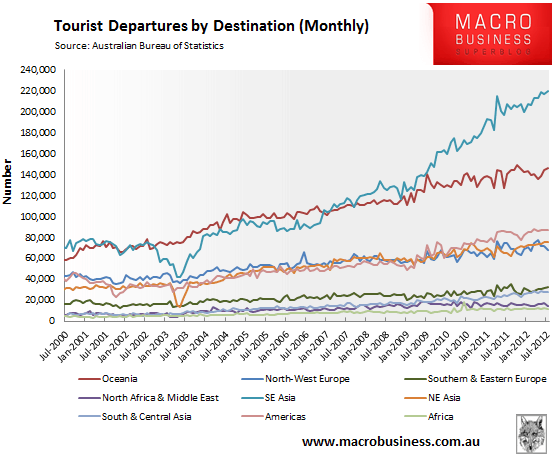
The Aussie bogan’s lust for Bali and Thailand, in particular, has driven much of the recent decline in Australian tourism. However, Singapore has become increasing popular recently, with departures there rising by 4% in July and by 13% over the year. This compares to Indonesia (Bali), which has experienced zero growth in Australian tourist arrivals over the past year.
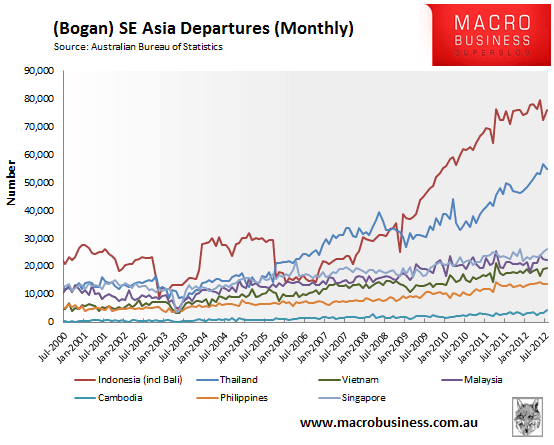
By contrast, the most foreign visitors to Australia came from North East Asia and Oceania (mostly New Zealand), which accounted for 24% and 23% of arrivals respectively in July 2012. This was followed by North Western Europeans (18%) and South East Asians (16%):
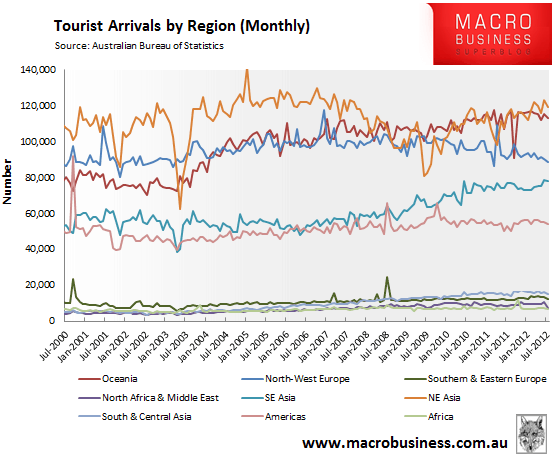
Expect the pain for Australia’s tourism industry to continue until the dollar falls.
Twitter: Leith van Onselen. Leith is the Chief Economist of Macro Investor, Australia’s independent investment newsletter covering trades, stocks, property and yield. Click for a free 21 day trial.

